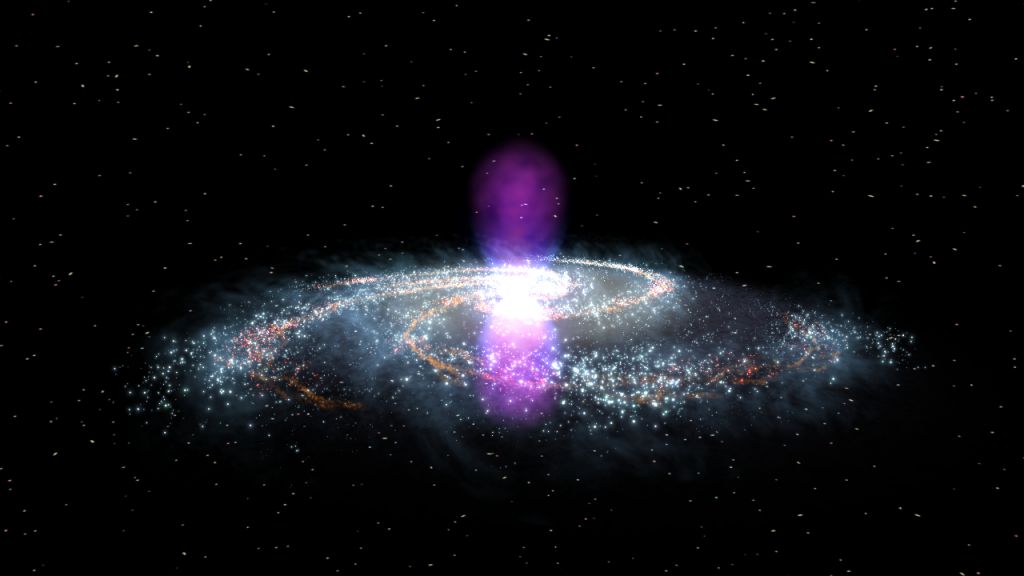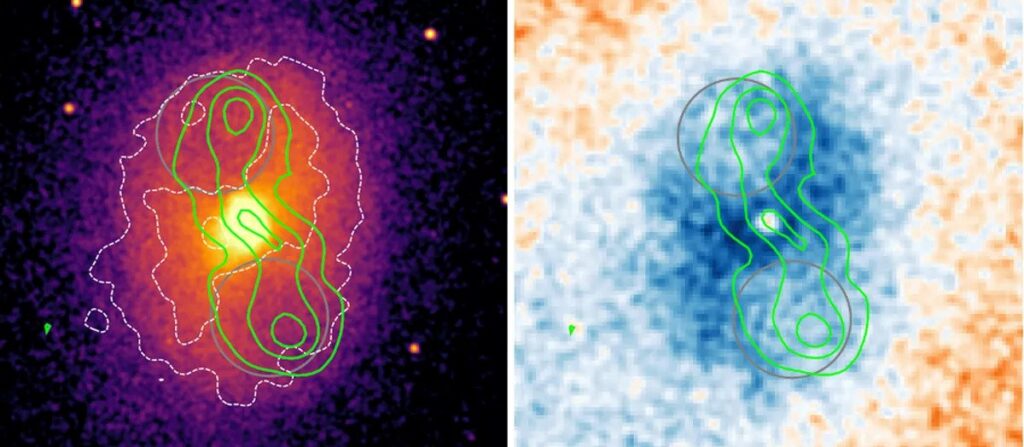Scientists are investigating two giant “radio bubbles” that are formed due to the activity of a supermassive black hole, which is 2.6 billion light-years away. They find out why these structures don’t collapse over time.

“Radio bubbles” of supermassive black holes
Scientists have studied the galaxy cluster MS0735, located at a distance of 2.6 billion light-years from us. Their attention is drawn to two giant gas bubbles associated with a supermassive black hole, which is located in the center of one of the star systems forming this cluster.
Such formations are quite typical for all supermassive black holes that actively absorb matter. It is known that two similar “radio bubbles” rise above and below the Milky Way. Their appearance is associated with the activity of the Sagittarius A* object.
As a rule, “radio bubbles” are not visible to the naked eye, but they are clearly visible in the radio range. They arise when supermassive black holes absorb matter and throw part of it into intergalactic space through the poles as a result of a process known as “feedback”.
When an accelerated matter collides with a gas sprayed in intergalactic space, it is heated, simultaneously being sprayed in space. This is how radiation zones arise, which we call “radio bubbles”.
Why are these objects not destroyed?
The most interesting thing about “radio bubbles” is why these objects do not collapse over time. To find the answer to this question, scientists sent the MUSTANG-2 radio telescope receiver of the Green Bank Observatory to MS0735. They also used data about this cluster obtained earlier by the Chandra space X-ray telescope.
They also used the effect of subtle curvature, which occurred when electrons in a hot gas interacted with the cosmic microwave background, which was formed 380 thousand years after the Big Bang and the light from which we receive.

MUSTANG-2 operates at a frequency of 90 MHz, thanks to which scientists were able to understand what the radio bubbles are filled with and why they do not collapse over time. It turned out that there are many factors that affect this, and most of them are of a non-thermal nature.
These include high-energy cosmic particles, relativistic particles, and turbulence. Magnetic fields also contribute. Thus, thermal and non-thermal energy sources enter into a complex interaction in “radio bubbles”. Now astronomers will try to observe the same systems in different ranges.
According to www.space.com
Follow us on Twitter to get the most interesting space news in time
https://twitter.com/ust_magazine

